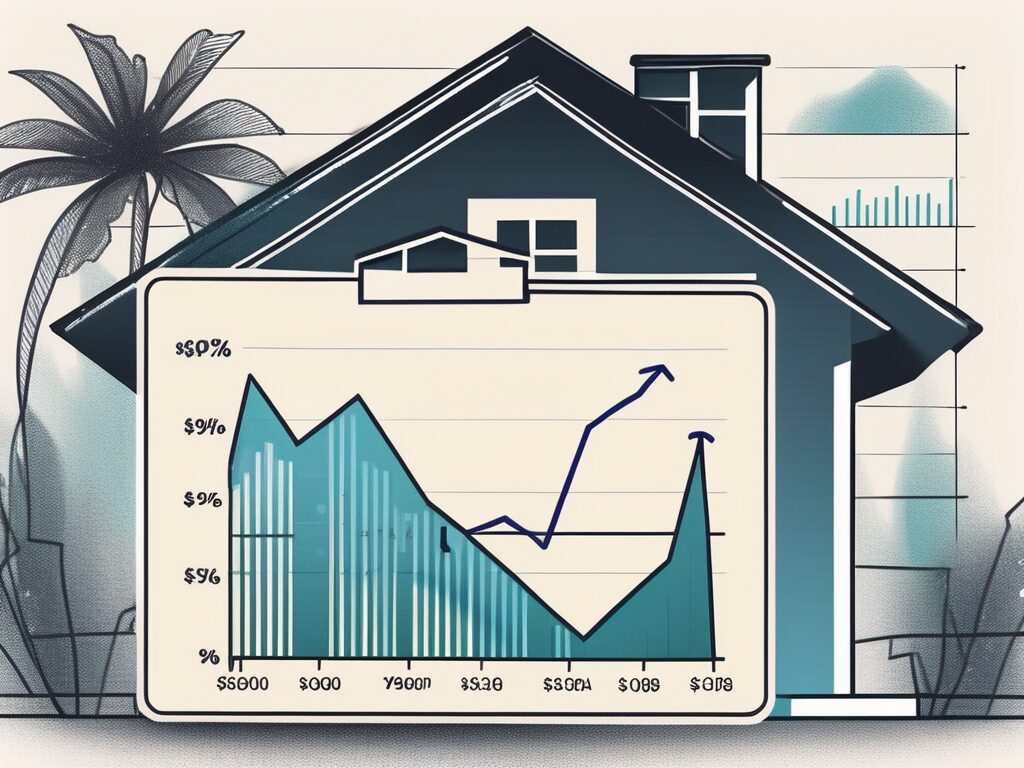
Agent A-Team or Solo Superhero? Finding the Right Real Estate Partner for Your Selling Journey in Wildwood Florida
When it comes to selling your home in Wildwood, Florida,…
January 29, 2024
In the world of real estate, one key factor that has a significant impact on home sales is mortgage rates. For potential buyers and sellers in Cutler Bay, it is crucial to have a thorough understanding of how mortgage rates work and the implications they have on the housing market. This article aims to explore the complexities of mortgage rates, their relationship with home sales, the current state in Cutler Bay, and strategies for navigating this ever-changing landscape.
Before delving into the impact of mortgage rates on home sales, it is important to have a clear understanding of what mortgage rates actually are. Mortgage rates are the interest rates that lenders charge borrowers for borrowing funds to purchase a property. These rates have a direct impact on the cost of borrowing, which, in turn, affects the affordability of homes for potential buyers. Understanding how these rates are determined is essential.
Mortgage rates are influenced by a variety of factors, including inflation, economic conditions, and the overall health of the housing market. Lenders take into account these factors, as well as the borrower’s creditworthiness, to determine an appropriate interest rate for a mortgage loan. As economic conditions fluctuate, so too can mortgage rates, making them a dynamic component of the homebuying process.
Inflation is a key factor that affects mortgage rates. When inflation is high, lenders may increase mortgage rates to compensate for the decrease in purchasing power of the money they will receive over the life of the loan. On the other hand, when inflation is low, lenders may offer lower mortgage rates to attract borrowers and stimulate the housing market.
Economic conditions also play a significant role in determining mortgage rates. During periods of economic growth and stability, lenders may offer lower rates to encourage borrowing and stimulate the housing market. Conversely, during times of economic uncertainty or recession, lenders may increase rates to mitigate risk and protect their investments.
The overall health of the housing market is another crucial factor in determining mortgage rates. When the housing market is strong, with high demand and low inventory, lenders may offer lower rates to attract borrowers and facilitate home sales. Conversely, when the housing market is sluggish, with low demand and high inventory, lenders may increase rates to offset the decreased demand and mitigate risk.
Several key factors play a role in determining mortgage rates. The Federal Reserve’s monetary policy is one such factor. When the Federal Reserve raises interest rates, mortgage rates tend to increase as well. This is because higher interest rates make borrowing more expensive, which can reduce the demand for homes and slow down the housing market. On the other hand, when the Federal Reserve lowers interest rates, mortgage rates typically follow suit. Lower interest rates make borrowing more affordable, which can stimulate homebuying activity and boost the housing market.
In addition to the Federal Reserve’s monetary policy, inflation expectations also influence mortgage rates. If inflation is expected to rise in the future, lenders may increase mortgage rates to protect against the decrease in purchasing power. Conversely, if inflation is expected to remain low, lenders may offer lower rates to attract borrowers and stimulate the housing market.
Market forces also play a significant role in determining mortgage rates. Supply and demand dynamics in the mortgage market can impact rates. When there is high demand for mortgage loans, lenders may increase rates to capitalize on the increased competition among borrowers. Conversely, when there is low demand for mortgage loans, lenders may lower rates to attract borrowers and stimulate lending activity.
Overall, understanding the factors that determine mortgage rates is crucial for both borrowers and lenders. Borrowers can use this knowledge to make informed decisions about when to apply for a mortgage loan and what type of interest rate to expect. Lenders can use this information to set competitive rates that attract borrowers and facilitate home sales. The dynamic nature of mortgage rates underscores the importance of staying informed and monitoring market conditions when considering a home purchase or refinancing a mortgage.
Mortgage rates have a significant impact on the housing market, particularly on home sales. The level of mortgage rates can influence a buyer’s decision-making process and ultimately determine their purchasing power. Understanding this relationship is vital for buyers and sellers alike.
When it comes to buying a home, mortgage rates play a crucial role in shaping buyers’ decisions. High mortgage rates can deter potential buyers from entering the market or force them to opt for more affordable housing options. The thought of higher monthly mortgage payments can make buyers think twice about taking on such a financial commitment. As a result, demand for homes may decrease, causing a slowdown in the housing market.
Conversely, lower mortgage rates can have the opposite effect. They can incentivize buyers to enter the market, as they can afford larger loan amounts and benefit from lower monthly payments. With lower rates, buyers may feel more confident about their ability to secure a mortgage and may be more willing to explore different housing options. This increased demand can lead to a more active housing market, with more homes being sold.
The impact of high and low mortgage rates on home sales can be profound and can vary depending on market conditions. In a high mortgage rate environment, sellers may face reduced demand and may need to adjust their pricing strategies accordingly. The higher mortgage rates can make it more challenging for potential buyers to qualify for a loan, leading to fewer offers and longer time on the market for sellers.
On the other hand, in a low mortgage rate environment, sellers can expect increased buyer interest and potentially sell their homes at higher prices. Lower rates can create a sense of urgency among buyers, as they see an opportunity to secure a mortgage at a more favorable rate. This increased demand can drive up home prices, benefiting sellers who are looking to maximize their profits.
It is crucial for sellers to stay informed about current mortgage rate trends to make informed decisions about pricing and timing their listings. By understanding how mortgage rates can impact home sales, sellers can strategically position themselves in the market and adjust their strategies accordingly. Being aware of the current market conditions and the potential influence of mortgage rates can help sellers make informed decisions about pricing their homes and timing their listings to attract the most qualified buyers.
In order to comprehend the implications of mortgage rates on home sales in Cutler Bay, it is necessary to examine the current state of these rates. By understanding the historical context and recent trends, buyers and sellers can gain valuable insights into the local market dynamics.
Over the past several years, Cutler Bay has experienced fluctuations in mortgage rates that have had a substantial impact on home sales. Assessing the historical data can provide a clearer picture of the market’s behavior and inform future predictions.
Looking back at the mortgage rates in Cutler Bay, it is evident that they have gone through various cycles. In the early 2000s, rates were relatively high, making it more challenging for buyers to afford homes. This led to a slowdown in the real estate market, with fewer sales and longer listing times.
However, as the economy recovered from the 2008 financial crisis, mortgage rates began to decline. This decline was driven by the Federal Reserve’s efforts to stimulate the housing market and boost economic growth. As a result, Cutler Bay experienced a surge in home sales, as buyers took advantage of the lower rates to secure affordable loans.
From 2010 to 2015, mortgage rates in Cutler Bay remained relatively stable, hovering around 4% to 5%. This stability provided a sense of confidence to both buyers and sellers, as they could plan their transactions with more certainty. The real estate market in Cutler Bay thrived during this period, with steady sales and increasing property values.
However, in recent years, the mortgage rates in Cutler Bay have reached historically low levels. This significant drop in rates has created a favorable environment for potential buyers, as they can now secure loans at exceptionally affordable rates. The impact of these low rates has been profound, leading to a surge in demand for homes in the area.
Currently in Cutler Bay, mortgage rates are at historically low levels. This has created a favorable environment for potential buyers, as they can secure loans at affordable rates. Consequently, this increased affordability has resulted in a surge in demand for homes in the area. Sellers have been able to capitalize on this trend by often receiving multiple offers and achieving quicker sales. However, it is important to monitor market conditions and be prepared for potential future rate increases.
The recent trends in Cutler Bay’s mortgage rates have been influenced by various factors. One key factor is the overall state of the economy. When the economy is strong and growing, mortgage rates tend to rise as the demand for loans increases. Conversely, during economic downturns, rates tend to decline as the Federal Reserve implements measures to stimulate economic activity.
Another factor that affects mortgage rates in Cutler Bay is the national housing market. Cutler Bay is not an isolated market, and it is influenced by the broader trends in the real estate industry. If there is a nationwide increase in demand for homes, it can lead to higher mortgage rates in Cutler Bay as lenders adjust their rates to manage the increased demand.
Furthermore, the Federal Reserve’s monetary policy decisions also play a significant role in shaping mortgage rates. The Federal Reserve has the power to influence short-term interest rates, which, in turn, affect mortgage rates. When the Federal Reserve lowers interest rates, it can lead to lower mortgage rates in Cutler Bay, making homeownership more affordable for potential buyers.
It is important for buyers and sellers in Cutler Bay to stay informed about the current state of mortgage rates and understand the factors that influence them. By keeping a close eye on market conditions and working with knowledgeable real estate professionals, individuals can make informed decisions and navigate the dynamic landscape of the housing market in Cutler Bay.
Predicting the future of home sales in Cutler Bay requires an examination of various factors, including the potential impact of rising or falling mortgage rates. By understanding these dynamics, buyers and sellers can strategize accordingly and make informed decisions about their real estate endeavors.
When it comes to the potential impact of rising mortgage rates, there are several factors to consider. Firstly, higher mortgage rates can create affordability challenges for potential buyers in Cutler Bay. As the cost of borrowing increases, it may become more difficult for buyers to qualify for loans and afford the monthly mortgage payments. This could slow down the rate of home sales and potentially shift the market towards favoring sellers.
However, it is important to note that rising mortgage rates can also indicate a strong economy. When rates increase, it often signifies that the demand for borrowing is high, which can be a positive sign for the overall health of the economy. A strong economy typically leads to increased job security and higher wages, which in turn can drive up demand for homes in Cutler Bay. This increased demand can counterbalance the affordability challenges posed by rising rates and potentially contribute to a steady or even growing market.
On the other hand, falling mortgage rates can have a different impact on the future of home sales in Cutler Bay. When rates decrease, it often leads to a surge in buyer demand. Lower rates mean increased affordability, as buyers can qualify for larger loan amounts with lower monthly payments. This surge in demand can create a more competitive market for sellers, potentially resulting in quicker sales and increased property values.
Additionally, falling mortgage rates can also incentivize existing homeowners to refinance their mortgages. This can free up additional funds for homeowners, which they may choose to invest in home renovations or upgrades. These improvements can further drive up property values in Cutler Bay and contribute to a thriving real estate market.
It is worth noting that while mortgage rates play a significant role in predicting the future of home sales in Cutler Bay, they are not the only factor at play. Other factors such as local economic conditions, job growth, and housing inventory levels also influence the dynamics of the real estate market. Therefore, it is important for buyers and sellers to consider a holistic view of the market and consult with real estate professionals to make well-informed decisions.
Navigating the complexities of the mortgage rate environment in Cutler Bay requires careful consideration and preparation. Whether you are a buyer or seller, these strategies can help optimize your real estate experience in light of changing mortgage rates.
When it comes to buying a home in a high mortgage rate environment, there are several key tips to keep in mind. First and foremost, it is crucial for buyers to be financially prepared. This means carefully assessing their budget and determining how much they can comfortably afford to spend on a monthly mortgage payment. It also involves improving their credit score, as a higher score can lead to more favorable interest rates and loan terms.
In addition to financial preparation, buyers should also focus on saving for a larger down payment. While it may be tempting to put down the minimum required amount, a larger down payment can help lower the overall loan amount and potentially secure a better interest rate. By diligently saving and budgeting, buyers can position themselves for success in a high mortgage rate environment.
Another important strategy for buyers in a high mortgage rate environment is to stay informed about market conditions. This includes keeping an eye on interest rate trends and understanding how they may impact the cost of borrowing. By staying informed, buyers can be ready to act quickly when favorable opportunities arise, such as when rates temporarily dip or when there is less competition in the market.
On the other hand, sellers can take advantage of a low mortgage rate environment to attract more buyers. When rates are low, buyers are often more motivated to make a purchase, as they can secure more affordable financing. To maximize their chances of success, sellers should focus on preparing their homes for sale. This includes making necessary repairs, decluttering, and staging the property to showcase its best features.
In addition to preparing the home, setting a competitive price is crucial in a low mortgage rate environment. Sellers should work with experienced real estate agents who can provide guidance on pricing strategies based on current market trends. By pricing their homes competitively, sellers can attract more buyers and potentially receive multiple offers.
Working with an experienced real estate agent is particularly important in a low mortgage rate environment. These professionals have a deep understanding of the local market and can effectively market the property to potential buyers. They can also negotiate on behalf of the seller to ensure they receive the best possible offer.
In conclusion, whether you are a buyer or seller, navigating the mortgage rate environment in Cutler Bay requires careful consideration and preparation. By following these strategies, buyers can position themselves for success in a high mortgage rate environment, while sellers can take advantage of a low mortgage rate environment to attract more buyers and secure favorable offers.
Understanding the impact of mortgage rates on home sales in Cutler Bay is crucial for anyone navigating the real estate market. By grasping the basics of mortgage rates, recognizing their influence on buyer behavior, staying informed about the current state of rates, predicting future market dynamics, and implementing effective strategies, buyers and sellers can make more informed decisions and achieve successful outcomes in their real estate endeavors.

If you want the Richr team to help you save thousands on your home just book a call.
 Book a call
Book a call